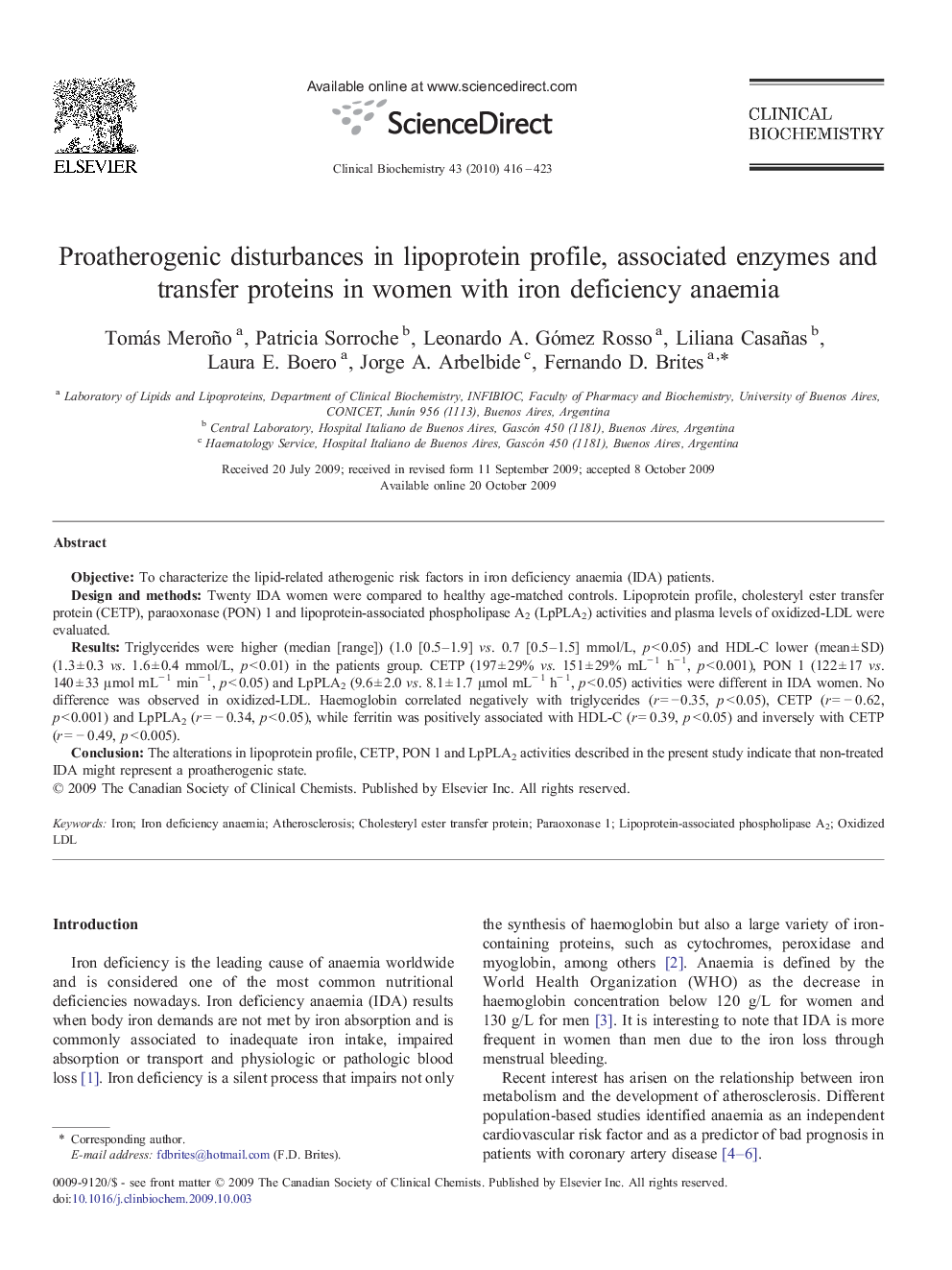| Article ID | Journal | Published Year | Pages | File Type |
|---|---|---|---|---|
| 1970573 | Clinical Biochemistry | 2010 | 8 Pages |
ObjectiveTo characterize the lipid-related atherogenic risk factors in iron deficiency anaemia (IDA) patients.Design and methodsTwenty IDA women were compared to healthy age-matched controls. Lipoprotein profile, cholesteryl ester transfer protein (CETP), paraoxonase (PON) 1 and lipoprotein-associated phospholipase A2 (LpPLA2) activities and plasma levels of oxidized-LDL were evaluated.ResultsTriglycerides were higher (median [range]) (1.0 [0.5–1.9] vs. 0.7 [0.5–1.5] mmol/L, p < 0.05) and HDL-C lower (mean ± SD) (1.3 ± 0.3 vs. 1.6 ± 0.4 mmol/L, p < 0.01) in the patients group. CETP (197 ± 29% vs. 151 ± 29% mL− 1 h− 1, p < 0.001), PON 1 (122 ± 17 vs. 140 ± 33 μmol mL− 1 min− 1, p < 0.05) and LpPLA2 (9.6 ± 2.0 vs. 8.1 ± 1.7 μmol mL− 1 h− 1, p < 0.05) activities were different in IDA women. No difference was observed in oxidized-LDL. Haemoglobin correlated negatively with triglycerides (r = − 0.35, p < 0.05), CETP (r = − 0.62, p < 0.001) and LpPLA2 (r = − 0.34, p < 0.05), while ferritin was positively associated with HDL-C (r = 0.39, p < 0.05) and inversely with CETP (r = − 0.49, p < 0.005).ConclusionThe alterations in lipoprotein profile, CETP, PON 1 and LpPLA2 activities described in the present study indicate that non-treated IDA might represent a proatherogenic state.
